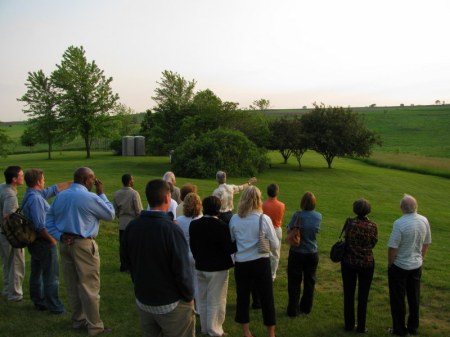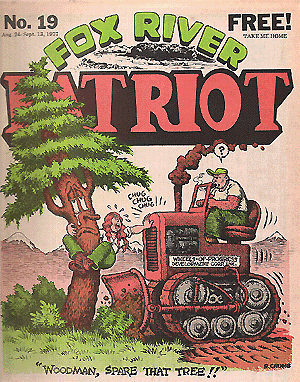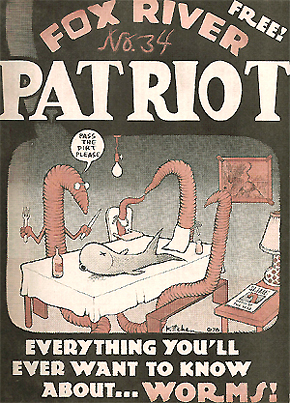The Wisconsin Humanities Council spent $74,348 last week.
The WHC board meets three times a year to make funding decisions. For months before hand, potential applicants call the WHC office with ideas and questions. Our postman and UPS deliverer know when it’s deadline time because packages start piling up. The applications are sent to the board members, all volunteers, who read them thoughtfully with an eye for the best examples of public programs that use history, culture, and conversation to brighten community life around the state.
As always, the proposals represented a wide range of programs, both in format and in subject matter. Sometimes it is like comparing apples and oranges: a documentary film about the ways a particular section of the Wisconsin River has changed in the past fifteen years alongside a conference meant to bring people together to consider “the economies of neighborliness” and how to strengthen communities.

The rolling hills of southwestern Wisconsin near Folklore Village. Photo by Jessica Becker
The meeting was held at Folklore Village, a cultural center located on a beautiful piece of rolling farmland in southwestern Wisconsin. The setting was grounding and helped, I think, to remind board members of what is most important in a time when grant dollars are precious.
Doug Miller, the director of Folklore Village for over twenty years and a member of the WHC board, told a story of a silver thread. It’s a story he shares with the many young children who visit the farm site every year. The thread goes back through time to connect Doug to his grandmother, who shared her jokes and stories with Doug as a child, and the people who passed that wisdom to Doug’s grandmother generations before.

Members of the WHC board at Folklore Village. Photo by Jessica Becker
As Doug talked, he wove the silver thread around us all, giving us the gift of his songs, his memories, his traditions and his culture. After years at Folklore Village, his collection has grown beyond those of his blood relatives thanks to his deep belief in the value of every person’s cultural heritage and his remarkable skill in listening.
I see the projects that were awarded WHC grant money after deliberation at our meeting at Folklore Village are projects that carry this thread in some way. A few examples:
- The Milwaukee Public Theatre is gathering stories and historic research on the Civilian Conservation Corp’s work in Wisconsin, which will be presented theatrically for all ages.
- A photographer and historian are working with veterans of America’s wars and conflicts to create an exhibition that honors the words and images of the veterans themselves.
- Students learning English will be able to take part in learning journeys, developed by the Kenosha Literacy Council, designed to teach language skills through experiences with history, art, and cultural traditions
- Youngsters in the Eau Claire area will be encouraged to follow their curiosities, to ask questions, and to think like historians at the Chippewa Valley Museum’s new exhibition, History Quest.
We are all hearing about economic challenges, funding cuts, job losses, and other budgetary troubles. I’m proud, in these times, to say that the Wisconsin Humanities Council is carrying the thread carefully, without losing sight of how easily threads can be snipped, tangled, or dropped. Would I be mixing metaphors to suggest that without these threads, all of them, we’d be left stark naked?
Posted by Jessica Becker, Director of Public Programs at the Wisconsin Humanities Council.



 Posted by Jessica Becker
Posted by Jessica Becker 




